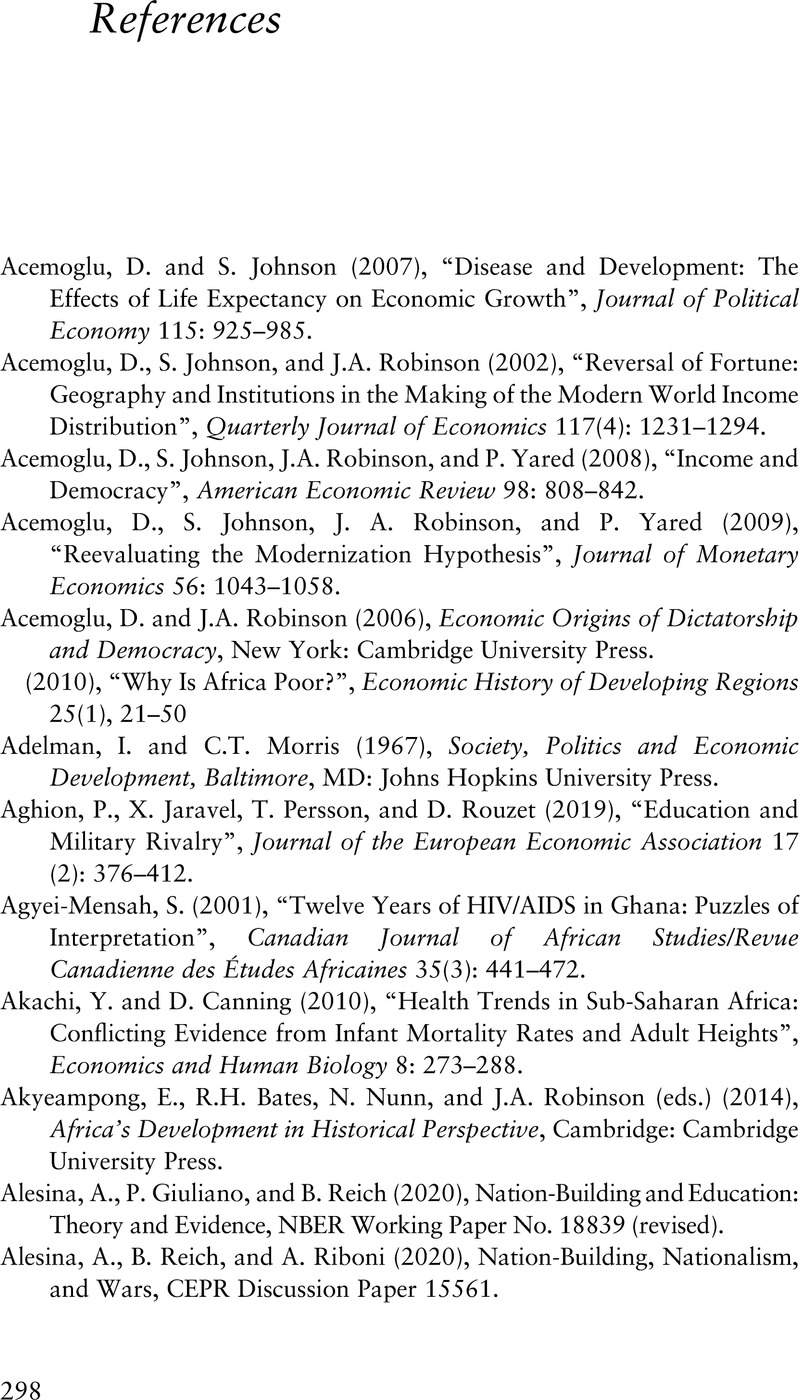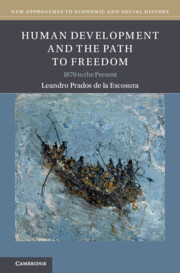Book contents
- Human Development and the Path to Freedom
- New Approaches to Economic and Social History
- Human Development and the Path to Freedom
- Copyright page
- Dedication
- Epigraph
- Contents
- Figures
- Tables
- Preface
- Introduction
- Part I An Aggregate View
- Part II The OECD and the Rest
- Postscript
- Book part
- Notes
- References
- Index
- References
References
Published online by Cambridge University Press: 14 July 2022
- Human Development and the Path to Freedom
- New Approaches to Economic and Social History
- Human Development and the Path to Freedom
- Copyright page
- Dedication
- Epigraph
- Contents
- Figures
- Tables
- Preface
- Introduction
- Part I An Aggregate View
- Part II The OECD and the Rest
- Postscript
- Book part
- Notes
- References
- Index
- References
Summary

- Type
- Chapter
- Information
- Human Development and the Path to Freedom1870 to the Present, pp. 298 - 325Publisher: Cambridge University PressPrint publication year: 2022



